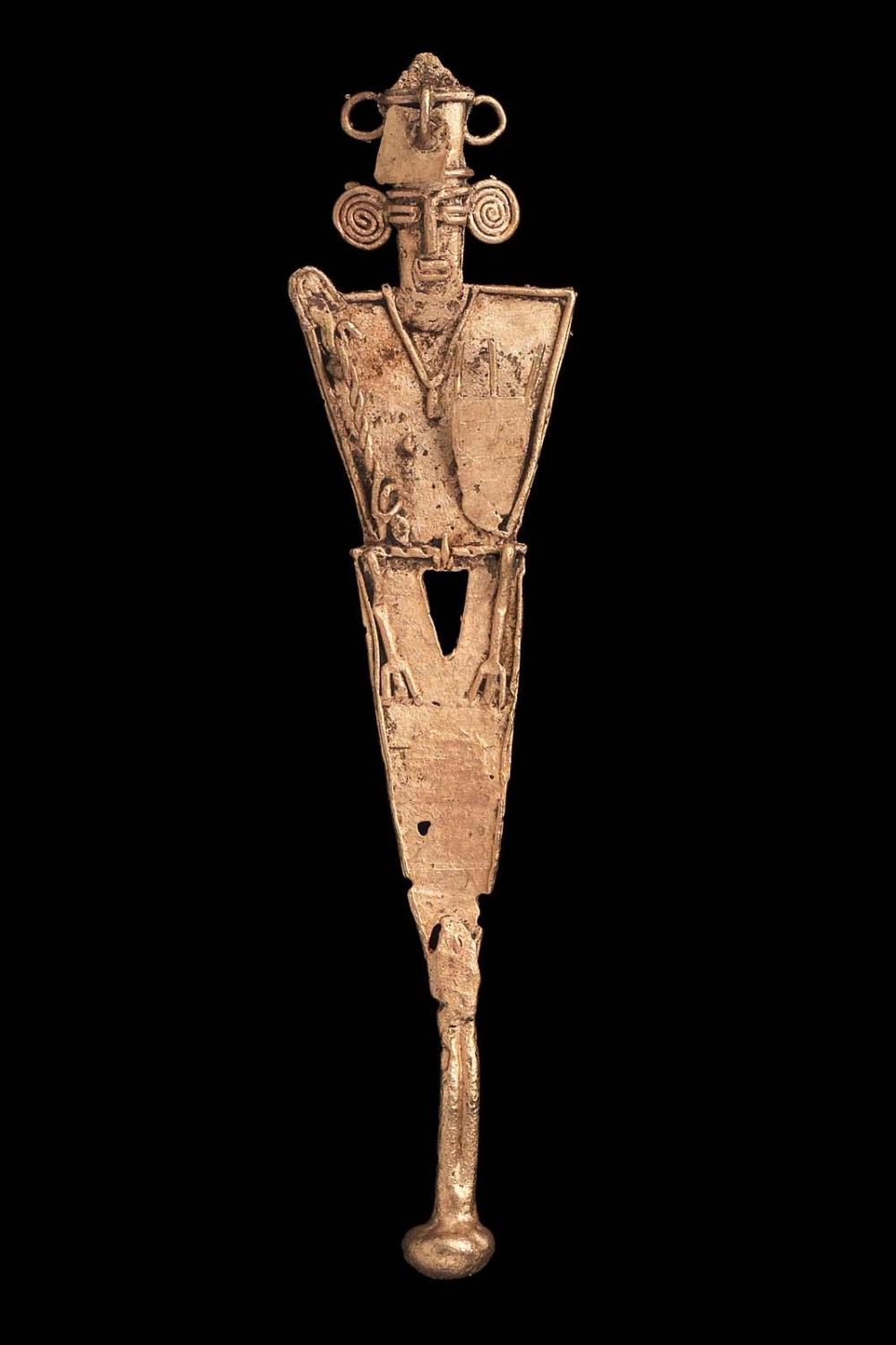Advanced Search 

Male effigy cache figure
Muisca
A.D. 1100–1550
Place of Origin: Departments of Cundinamarca & Boyacá, Colombia
Medium/Technique
Gold and copper alloy
Dimensions
12.06 cm (4 3/4 in.)
Credit Line
Museum purchase with funds donated by Landon T. Clay
Accession Number1975.46
CollectionsAmericas
ClassificationsRitual objects
DescriptionSeated male effigy figure holding a serpent staff or spearthrower in his right hand and a shield or snuff tray in his left hand. He wears a tall skull cap with three rings to which were attached adornments (only one survives). His earflares are represented by spirals and his long, single strand necklace includes an oval pendant.
ProvenanceBy 1908, collected in Colombia by Joaquin Arciniégas (b. 1865 - d. 1930), San José, Costa Rica and San Salvador, El Salvador; August 6, 1929, sold in San Salvador by Arciniégas to his brother-in-law, José Daniel Villatoro Rugama (b. 1887 - d. 1958), San Salvador; January 10, 1930, sold by Rugama to Oliverio Girondo (b. 1891 - d. 1967), Paris and Argentina. January 2, 1975, sold by Leon Buki (dealer), Buenos Aires, through Marcelo Buki, to Alphonse Jax (dealer), New York; 1975, sold by Alphonse Jax to the MFA. (Accession Date: March 12, 1975)
NOTE: The Arciniégas collection (MFA accession nos. 1975.35 - 1975.273) was offered to the Museum in 1975, accompanied by documentation of its ownership by Joaquin Arcienégas as early as 1908; photographs of it in the Arciniégas collection; and receipts for the collection’s sale in 1929 and 1930. Arciniégas had the collection in Costa Rica by 1908 and El Salvador by 1916; he asked his brother-in-law to sell the collection, and it was shipped to Paris for sale in December 1930/January 1931.
NOTE: The Arciniégas collection (MFA accession nos. 1975.35 - 1975.273) was offered to the Museum in 1975, accompanied by documentation of its ownership by Joaquin Arcienégas as early as 1908; photographs of it in the Arciniégas collection; and receipts for the collection’s sale in 1929 and 1930. Arciniégas had the collection in Costa Rica by 1908 and El Salvador by 1916; he asked his brother-in-law to sell the collection, and it was shipped to Paris for sale in December 1930/January 1931.
